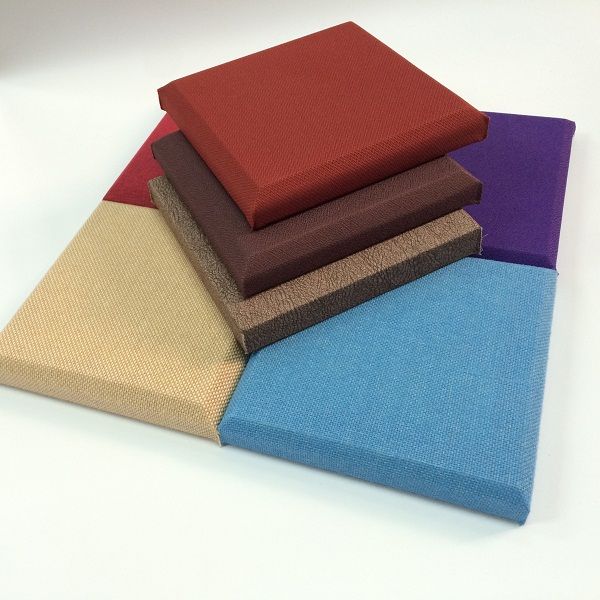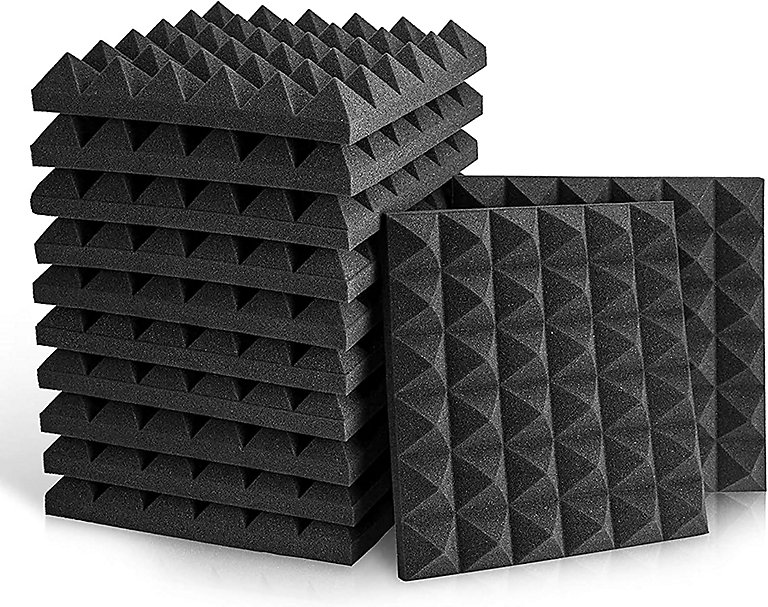Acoustic Wall Panels: Enhancing Spaces with Acoustic

Introduction:
Acoustic
wall panels are an innovative and practical solution for managing sound in
various environments, from homes to commercial spaces. These panels are
designed to absorb, dampen, and diffuse sound waves, improving the acoustic
quality of a room. Whether you're aiming to reduce noise levels, eliminate
echoes, or create a more comfortable listening environment, acoustic wall
panels offer an effective and aesthetically pleasing solution. This
comprehensive guide will explore the types, benefits, applications, and
installation of acoustic wall panels.
Understanding Acoustic Wall Panels:
Acoustic
wall panels are typically made from materials that are efficient at absorbing
sound, such as foam, fabric, or wood. These materials trap sound waves,
preventing them from bouncing off hard surfaces like walls, floors, and
ceilings. By doing so, acoustic panels reduce noise levels, control
reverberation, and enhance sound clarity within a space.
Types of Acoustic Wall Panels
Foam Panels:
Description:
Foam acoustic panels are made from lightweight, porous foam that absorbs sound
waves effectively. They are available in various shapes, sizes, and
thicknesses, allowing for customization to fit specific acoustic needs.
Applications:
Foam panels are ideal for recording studios, home theaters, and office spaces
where sound control is crucial. Their lightweight nature makes them easy to
install on walls and ceilings.
Benefits:
- High sound absorption efficiency
- Lightweight and easy to install
- Available
in various designs and colors
Fabric-Wrapped Panels:
Description:
Fabric-wrapped acoustic panels consist of a sound-absorbing core, such as
fiberglass or foam, covered with a decorative fabric. These panels combine
functionality with aesthetics, offering a stylish solution for sound control.
Applications:
Fabric-wrapped panels are commonly used in conference rooms, auditoriums, and
residential spaces. Their customizable fabric covers allow them to blend
seamlessly with interior decor.
Benefits:
- High aesthetic appeal with customizable fabric options
- Effective sound absorption
- Versatile
in design and application

Wooden Panels:
Description:
Wooden acoustic panels feature a perforated or slotted wooden surface with an
underlying sound-absorbing material. These panels offer a balance of sound
absorption and diffusion, creating a natural acoustic environment.
Applications:
Wooden panels are suitable for music halls, theaters, and upscale interiors.
Their natural look and sound-enhancing properties make them a popular choice
for architectural acoustics.
Benefits:
- Natural and elegant appearance
- Combines absorption and diffusion
- Durable
and long-lasting

Benefits of Acoustic Wall Panels
Improved Sound Quality:
Acoustic
panels enhance the clarity and quality of sound within a space by reducing
echoes and reverberation. This is particularly beneficial in environments where
clear audio is essential, such as recording studios, conference rooms, and home
theaters.
Noise Reduction:
By
absorbing sound waves, acoustic panels help to minimize noise levels in busy or
noisy environments. This creates a more comfortable and productive atmosphere
in offices, restaurants, and open-plan living areas.:
Aesthetic Enhancement:
Modern
acoustic panels are avai:lable in a variety of designs, colors, and finishes,
allowing them to complement and enhance the visual appeal of any space.
Fabric-wrapped and wooden panels, in particular, offer a high degree of
customization to match interior decor.
Versatility:
Acoustic
panels are versatile and can be used in a wide range of settings, from
residential homes to large commercial facilities. They can be installed on
walls, ceilings, and even as freestanding partitions, providing flexible sound
management solutions.
Applications of Acoustic Wall Panels
Home Theaters:
In
home theaters, acoustic panels are essential for creating an immersive audio
experience. They absorb excess sound waves, preventing echoes and ensuring that
dialogue, music, and sound effects are clear and crisp.
Recording Studios:
Recording
studios require precise sound control to achieve high-quality recordings.
Acoustic panels help to absorb unwanted sound reflections, creating a
controlled environment for recording vocals and instruments.
Office Spaces:
In
open-plan offices and meeting rooms, acoustic panels reduce noise levels and
improve speech intelligibility. This enhances concentration, productivity, and
communication among employees.
Commercial Spaces:
Restaurants,
retail stores, and entertainment venues benefit from acoustic panels by
creating a more pleasant and comfortable environment for customers. Reduced
noise levels contribute to a better overall experience.
Educational Institutions:
Classrooms,
lecture halls, and libraries use acoustic panels to manage sound and create
conducive learning environments. Clear acoustics are essential for effective
teaching and learning.
Installation of Acoustic Wall Panels
Planning:
Before installation, conduct an acoustic assessment of the space to determine the specific sound issues and requirements. Plan the placement of panels to target areas with the highest sound reflection and reverberation.
Surface Preparation:
Ensure
that the installation surface is clean, dry, and smooth. Remove any obstacles
or fixtures that may interfere with the panel installation.
Mounting:
Acoustic panels can be mounted using various methods, including adhesive strips, brackets, or frames. The choice of mounting method depends on the panel type, weight, and the surface material.
Arrangement:
Proper
spacing and arrangement of panels are crucial for optimal sound absorption.
Follow the manufacturer’s guidelines for spacing and consider symmetrical
placement for a balanced aesthetic.
Conclusion:
Acoustic wall panels are an effective and stylish solution for managing sound in various environments. By understanding the different types, benefits, and applications of these panels, you can choose the right acoustic solution for your space. Whether enhancing the sound quality of a home theater, reducing noise in an office, or creating a comfortable commercial environment, acoustic wall panels offer a versatile and attractive option for achieving superior acoustics.










